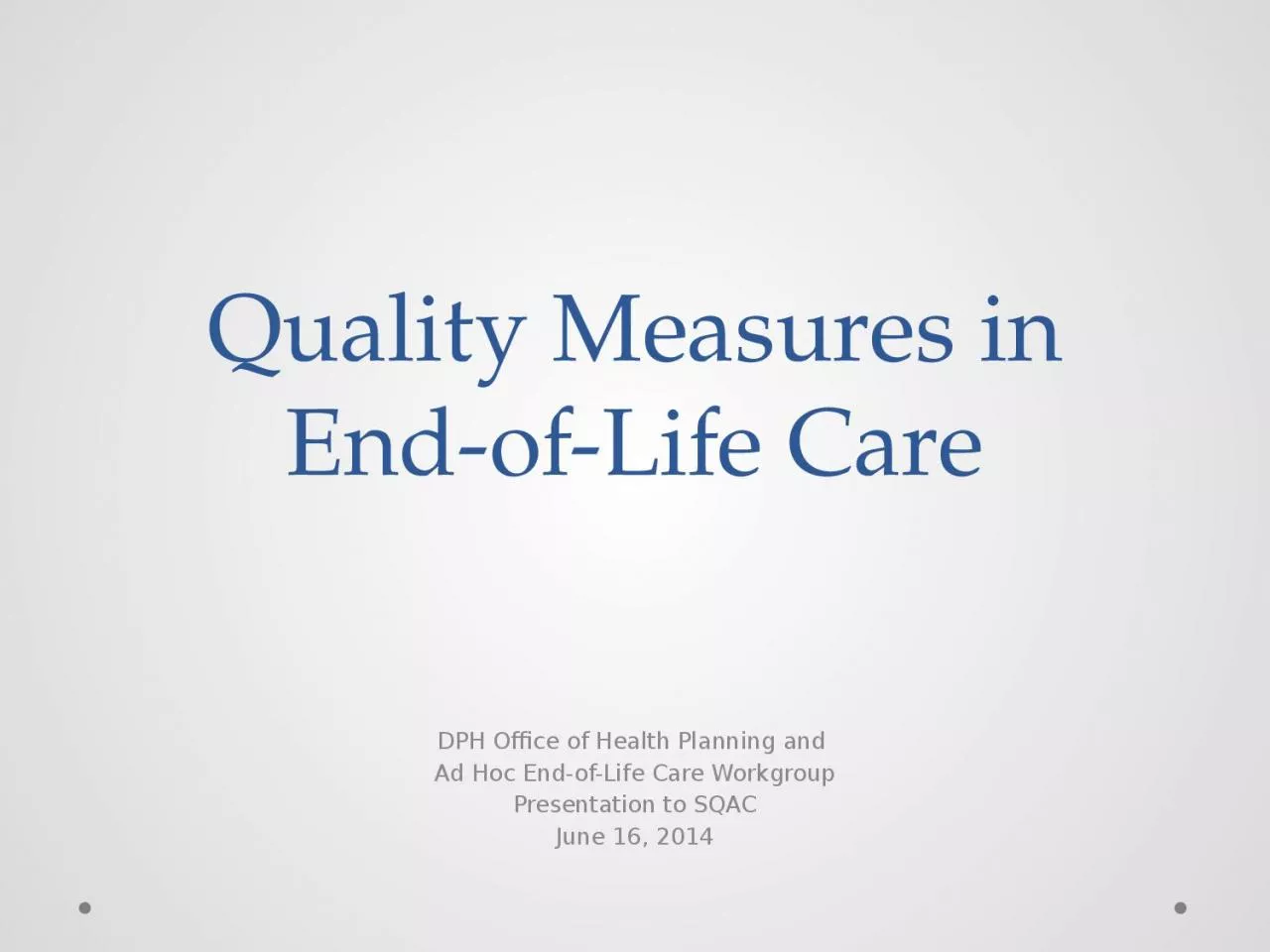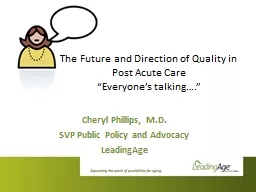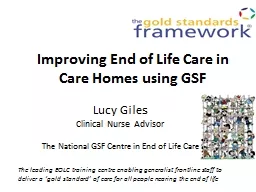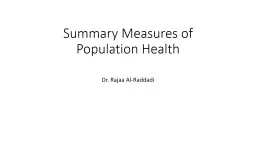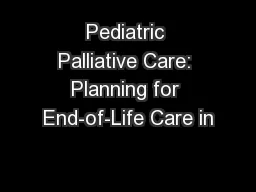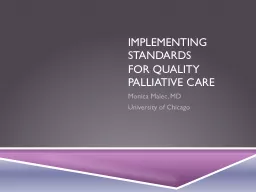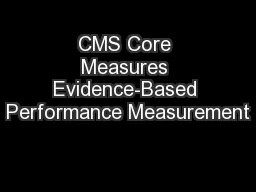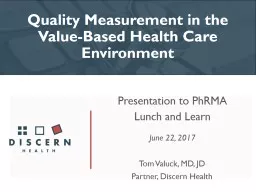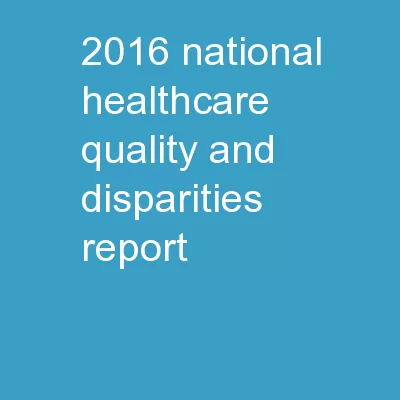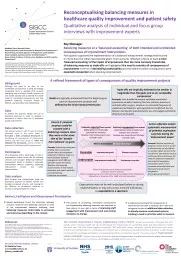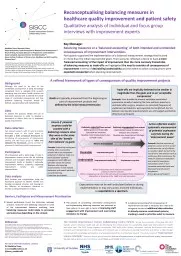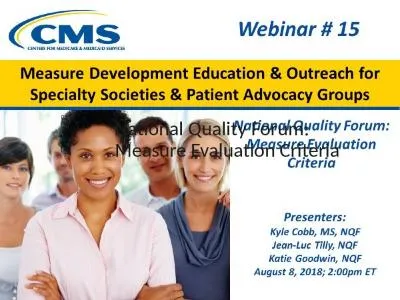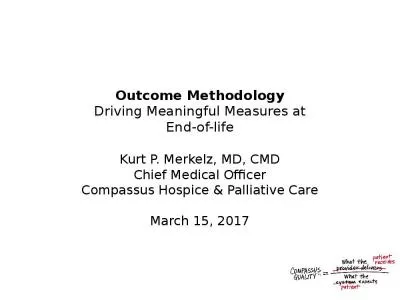PPT-Quality Measures in End-of-Life Care
Author : oconnor | Published Date : 2024-03-13
DPH Office of Health Planning and Ad Hoc EndofLife Care Workgroup Presentation to SQAC June 16 2014 Ad Hoc EndofLife Care Measures Workgroup Katherine Ast MSW
Presentation Embed Code
Download Presentation
Download Presentation The PPT/PDF document "Quality Measures in End-of-Life Care" is the property of its rightful owner. Permission is granted to download and print the materials on this website for personal, non-commercial use only, and to display it on your personal computer provided you do not modify the materials and that you retain all copyright notices contained in the materials. By downloading content from our website, you accept the terms of this agreement.
Quality Measures in End-of-Life Care: Transcript
DPH Office of Health Planning and Ad Hoc EndofLife Care Workgroup Presentation to SQAC June 16 2014 Ad Hoc EndofLife Care Measures Workgroup Katherine Ast MSW Madeleine Biondolillo MD. Senior Advisor. Office of Clinical Standards and Quality. Centers for Medicare and Medicaid Services. Quality Measurement Strategy and Alignment. Better Health for. the Population. Better Care. for Individuals. in Post Acute Care. “Everyone’s talking….”. Cheryl Phillips, M.D.. SVP Public Policy and Advocacy. LeadingAge. Who Drives Quality Measures in PA/LTC?. CMS. Legislation. Consumers. State Medicaid Offices. . Lucy Giles. Clinical Nurse . Advisor. The National GSF Centre in End of Life Care . The leading EOLC training centre enabling generalist frontline staff . to . deliver a ‘gold standard’ of care for all people nearing the end of life. Dr. Rajaa Al-Raddadi. Summary Measures of Population Health. Rationale for summary . measures. Measure of Morbidity. Mortality-based measures. Combined disability & mortality methods. . Why do we need measures of population health?. Pediatric Palliative Care. Mike Harlos MD, . CCFP(PC), . FCFP. Professor and Section Head, Palliative Medicine, University of Manitoba. Medical Director, WRHA Adult and Pediatric Palliative Care. Simone Stenekes RN, MN, CHPCN(C. Monica Malec, MD. University of Chicago. Nothing to disclose. Objectives. Utilize the eight domains of palliative care as the structure for palliative care consultation. Identify quality indicators appropriate for each of the eight domains of palliative care. What is Evidence-Based Medicine?. Patient care that research has shown to result in better outcomes for patients, such as lower:. . ● . mortality and morbidity. . ● . disability. . ● . length of stay. Tom Valuck, MD, JD. Partner, Discern Health. Presentation to PhRMA . Lunch and Learn. June 22, 2017. Quality Measurement in Context. 4. . Health Data . Impact. 1. . Health Data . Generated. 3. . Health Data . This presentation contains notes. Select View, then Notes page to read them.. Key Findings Related to Access and Priorities. Access. to health care generally did not show significant improvement, but . Organization? . A Presentation by. Michealle. . Gady. Families USA. June 13, 2011. ACOs Defined . Generally – ACOs are a group of providers who are held accountable for improving health care quality while lowering the rate of growth in health care spending. Reconceptualising balancing measures in healthcare quality improvement and patient safety Qualitative analysis of individual and focus group interviews with improvement experts The Scottish Improvement Science Collaborating Centre (SISCC) Reconceptualising balancing measures in healthcare quality improvement and patient safety Qualitative analysis of individual and focus group interviews with improvement experts The Scottish Improvement Science Collaborating Centre (SISCC) Vision and Goals . NQF Evaluation Criteria. August 8, 2018. National Quality Forum’s Measure Evaluation Criteria. 5. Katie. Goodwin. , Senior Project. Manager. Jean-Luc Tilly, Senior Manager, Data Analytics. Kurt P. . Merkelz. , MD, CMD. Chief Medical Officer. Compassus Hospice & Palliative Care. March 15, . 2017. Dying in America. Tremendous growth in hospice care . Evidence exists that the experience of hospice care is positive for those who receive it.
Download Document
Here is the link to download the presentation.
"Quality Measures in End-of-Life Care"The content belongs to its owner. You may download and print it for personal use, without modification, and keep all copyright notices. By downloading, you agree to these terms.
Related Documents

